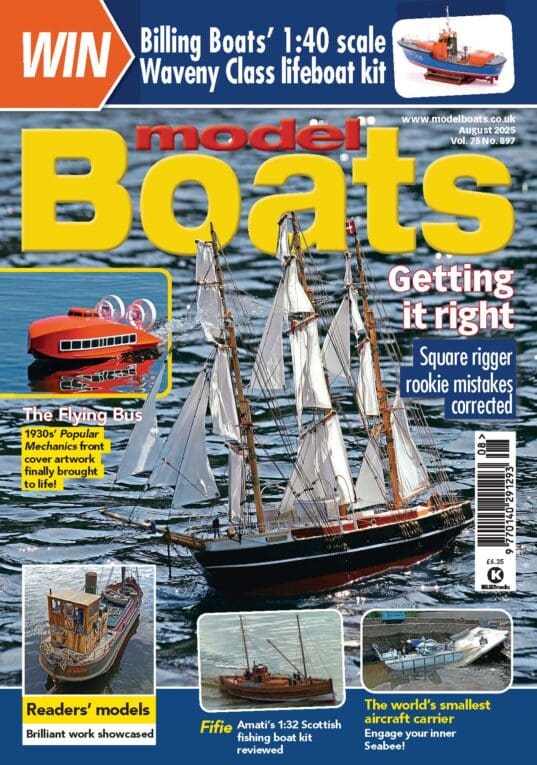Changing the subject slightly to GREAT BRITAIN. Here is an extract from my last book
concerning the ship:
—————————————————————————————————————–
I was fortunate, however, to come across the following account of this ship in The Pictorial
Gallery of Arts, 1847, and feel it is worth repeating, exactly as it appeared in print, 163 years ago.
“Perhaps there could not be a more appropriate ending to the present chapter than a slight
notice of that mighty specimen of steam-ship engineering, the Great Britain, which is
proceeding on her first voyage to America while this sheet is passing through the press. This
vessel is 289 feet long at the keel and 332 total length; the greatest width 51 feet, and the
depth 32; it displaces 16 feet of water when laden; its tonnage is 3,443 tons; the sheet iron
with which the water-surface is formed varies from half an inch to an inch thickness; the
boilers, weighing 200 tons, and capable of holding 200 tons of water, are supported upon
ten cast-iron beams, or girders, more than three feet in depth; the power is 1,000 horse;
the engines weigh 340 tons; the main shaft is upwards of 24 inches in diameter; the
vessel is propelled by a screw instead of paddle wheels, the screw having six arms,
15 ½ feet in diameter, 25 feet pitch, and weighs four tons; there are five water-tight
partitions in the hull; there is stowage for 1,500 tons of coal; there are four cylinders
to give the working power, each of 88 inches in diameter, and having a stroke of six feet.
In respect of the sailing arrangements, this mighty vessel has six masts, fitted with
wire-rope rigging; and it is provided, among other fittings, the new “swivel anchors”
alluded to on a former page. The passenger accommodations are on a scale compatible
with everything else. There are no less than two hundred and fifty berths, arranged
round two complete decks.
If this vessel, in respect to safety and speed (for commercial success depends on
many points beyond the reach of the shipbuilder), should equal the expectations of the
owners to the same degree as her predecessor the Great Western, she will indeed be
a fortunate vessel. From 1834 to 1844, that ship made seventy passages across the
Atlantic, comprising a distance of 256,000 miles. The average speed of the outward j
ourneys was 9 ½ miles an hour, and the homeward, 11 ¼ miles (the difference being
due to the effect of the “Gulf Stream” in the Atlantic, which retards the outward voyage
and hastens the homeward). The shortest outward passage was 12 days and 18 hours;
and the longest (in stormy weather) 22 days 6 hours. The shortest homeward voyage
was 12 days 7 hours; and the longest 15 days 8 hours. The average for the whole of t
he outward trips was 15 days 12 hours, and for the homeward, 13 days 9 hours. The
distance of each voyage was rather more than 3,000 miles. The greatest number of passengers taken at once was 152.
Can there be any doubt of the vast influence which the connection of steam, the press, the
ship and the railway carriage must exercise upon the future destinies of mankind; or is
there a more magnificent subject for speculation than the triumphs of civilization and
knowledge which will be the result of this confederation of the highest elements of
social progress – knowledge, commerce, and the facilities of intercourse – over all the
kingdoms of the earth?”
—————————————————————————————————————————-
I am more than a bit disapointed though, to discover that Brunel did not design the
engines – but we live & learn.
Bob
Edited By Bob Wilson on 22/06/2012 07:05:28




